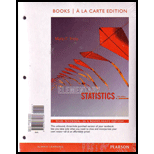
Concept explainers
FROM DATA TO DECISION
Critical Thinking: Did Mandal’s results from plant hybridization experiments contradict his theory?
Gregor Mendel conducted original experiments to study the genetic train of pea plaits. In 1865 he wrote “Experiments in Plant Hybridization.” which was published in Proceedings of the Natural History Society Mendel presented a theory that when there are two inheritable, one of them will be dominant and the other will be recessive. Each parent contributes one gene to an offspring and, depending on the combination of genes, that offspring could inherit the dominant trait or the recessive trait. Mendel conducted an experiment using pea plants. The pods of pea plants can be green or yellow. When one pea carrying a dominant green gene and a recessive yellow gene is crossed with another pea carrying the same green/yd low genes, the offspring can inherit any one of these four combinations of genes: (1) green/green; (2) green/yellow; (3) yellow /green: (4) yellow /yellow. Because green is dominant and yellow is recessive, the offspring pod will be green if either of the two inherited genes is green. The offspring can have a yellow pod only if it inherits the yellow gene from each of the two parents. Given these conditions, we expect that 3/4 of the offspring peas should have green pods; that is. P(green pod) = 3/4. When Mendel conducted his famous hybridization experiments using parent pea plants with the green/yellow combination of genes, he obtained 580 offspring. According to Mendel’s theory. 3/4 of the offspring should have green pods, bat the actual number of plants with green pods was 428. So the proportion of offspring with green pods to the total number of offspring b 428/580 = 0.738. Mendel expected a proportion of 3/4 or 0.75, but his actual mull is a proportion off 0.738.
- a. Assuming that P(green pod) = 3/4, find the
probability that among 580 offspring, the number of peas with green pods b exactly 428. - b. Assuming that P(green pod) = 3/4. find the probability that among 580 offspring, the number of peas with green pods b 428 or fewer.
- c. Which of the two preceding probabilities should be used for determining whether 428 is a significantly low number of peas with green pods?
- d. Use probabilities to determine whether 428 peas with green pods is a significantly low number. (Hint: See “Identifying Significant Results with Probabilities” in Section 5-1.)
Trending nowThis is a popular solution!

Chapter 5 Solutions
Elementary Statistics with Student Access Kit
- 9. The concentration function of a random variable X is defined as Qx(h) = sup P(x ≤ X ≤x+h), h>0. Show that, if X and Y are independent random variables, then Qx+y (h) min{Qx(h). Qr (h)).arrow_forward10. Prove that, if (t)=1+0(12) as asf->> O is a characteristic function, then p = 1.arrow_forward9. The concentration function of a random variable X is defined as Qx(h) sup P(x ≤x≤x+h), h>0. (b) Is it true that Qx(ah) =aQx (h)?arrow_forward
- 3. Let X1, X2,..., X, be independent, Exp(1)-distributed random variables, and set V₁₁ = max Xk and W₁ = X₁+x+x+ Isk≤narrow_forward7. Consider the function (t)=(1+|t|)e, ER. (a) Prove that is a characteristic function. (b) Prove that the corresponding distribution is absolutely continuous. (c) Prove, departing from itself, that the distribution has finite mean and variance. (d) Prove, without computation, that the mean equals 0. (e) Compute the density.arrow_forward1. Show, by using characteristic, or moment generating functions, that if fx(x) = ½ex, -∞0 < x < ∞, then XY₁ - Y2, where Y₁ and Y2 are independent, exponentially distributed random variables.arrow_forward
- 1. Show, by using characteristic, or moment generating functions, that if 1 fx(x): x) = ½exarrow_forward1990) 02-02 50% mesob berceus +7 What's the probability of getting more than 1 head on 10 flips of a fair coin?arrow_forward9. The concentration function of a random variable X is defined as Qx(h) sup P(x≤x≤x+h), h>0. = x (a) Show that Qx+b(h) = Qx(h).arrow_forward
- Suppose that you buy a lottery ticket, and you have to pick six numbers from 1 through 50 (repetitions allowed). Which combination is more likely to win: 13, 48, 17, 22, 6, 39 or 1, 2, 3, 4, 5, 6? barrow_forward2 Make a histogram from this data set of test scores: 72, 79, 81, 80, 63, 62, 89, 99, 50, 78, 87, 97, 55, 69, 97, 87, 88, 99, 76, 78, 65, 77, 88, 90, and 81. Would a pie chart be appropriate for this data? ganizing Quantitative Data: Charts and Graphs 45arrow_forward10 Meteorologists use computer models to predict when and where a hurricane will hit shore. Suppose they predict that hurricane Stat has a 20 percent chance of hitting the East Coast. a. On what info are the meteorologists basing this prediction? b. Why is this prediction harder to make than your chance of getting a head on your next coin toss? U anoiaarrow_forward
 MATLAB: An Introduction with ApplicationsStatisticsISBN:9781119256830Author:Amos GilatPublisher:John Wiley & Sons Inc
MATLAB: An Introduction with ApplicationsStatisticsISBN:9781119256830Author:Amos GilatPublisher:John Wiley & Sons Inc Probability and Statistics for Engineering and th...StatisticsISBN:9781305251809Author:Jay L. DevorePublisher:Cengage Learning
Probability and Statistics for Engineering and th...StatisticsISBN:9781305251809Author:Jay L. DevorePublisher:Cengage Learning Statistics for The Behavioral Sciences (MindTap C...StatisticsISBN:9781305504912Author:Frederick J Gravetter, Larry B. WallnauPublisher:Cengage Learning
Statistics for The Behavioral Sciences (MindTap C...StatisticsISBN:9781305504912Author:Frederick J Gravetter, Larry B. WallnauPublisher:Cengage Learning Elementary Statistics: Picturing the World (7th E...StatisticsISBN:9780134683416Author:Ron Larson, Betsy FarberPublisher:PEARSON
Elementary Statistics: Picturing the World (7th E...StatisticsISBN:9780134683416Author:Ron Larson, Betsy FarberPublisher:PEARSON The Basic Practice of StatisticsStatisticsISBN:9781319042578Author:David S. Moore, William I. Notz, Michael A. FlignerPublisher:W. H. Freeman
The Basic Practice of StatisticsStatisticsISBN:9781319042578Author:David S. Moore, William I. Notz, Michael A. FlignerPublisher:W. H. Freeman Introduction to the Practice of StatisticsStatisticsISBN:9781319013387Author:David S. Moore, George P. McCabe, Bruce A. CraigPublisher:W. H. Freeman
Introduction to the Practice of StatisticsStatisticsISBN:9781319013387Author:David S. Moore, George P. McCabe, Bruce A. CraigPublisher:W. H. Freeman





